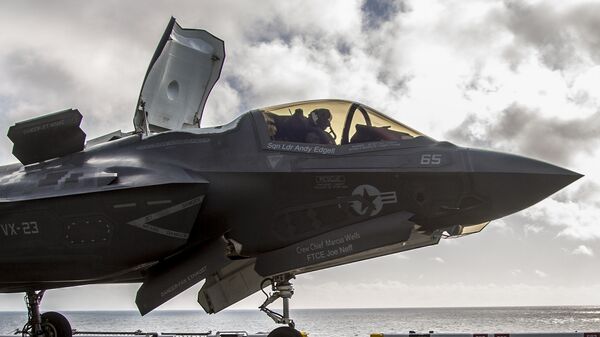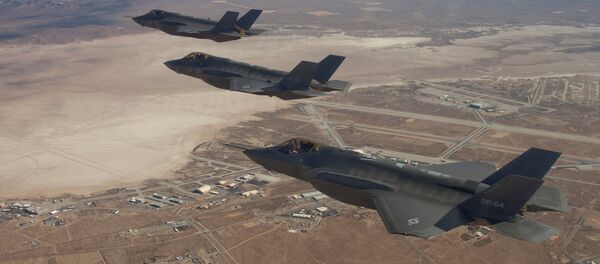Several squadrons of F-35s grounded at Luke Air Force Base are returning to the skies Wednesday even though the US Air Force never figured out what caused a flurry of oxygen poisoning episodes between May and June.
Five “physiological events” between May and June were reported by pilots enduring oxygen loss in mid-air. Seeing that since 2011, these events have been reported 15 times total, As Sputnik reported last Friday, these types of “events” are merely a euphemism for what pilots have reported is a life-threatening experience. Upon realizing a miscue with an air flow regulator, an F/A-18 Super Hornet explained his experience: “That’s when I realize my lips were tingling, my fingers are tingling, and I’m like 'Sh*t, man, something’s wrong' … And the guy in back’s like, 'Hey, dude! My fingers are blue!'"
The Air Force is trying out a new sensor made by a UK firm hoping they can finally pin down what’s going on. The device will track all incoming particles inhaled by pilots as well as gas that is exhaled in hopes of getting a better idea of the gaseous environment causing air teams to experience oxygen deprivation, defense contractor Cobham PLC said at the Paris Air Show over the weekend.
"This is a complex challenge,” Brig. Gen. Brook Leonard noted, pointing out that the solution would need to be "multidimensional” before returning to full operating capacity.
F-35s will face several restrictions on what they’re allowed to do when they go back into the air on Wednesday. They will have to avoid certain altitudes, increase supplies of backup oxygen, and will have the option of wearing the new sensors that collect performance data, the Air Force Times reported.
Speaking before Congress, US military brass was bewildered by the oxygenation problems plaguing a number of jets across the fleets. The T-45 has suffered a string of issues spurring instructors to protest senior leadership that young pilots shouldn’t be allowed in the planes.




